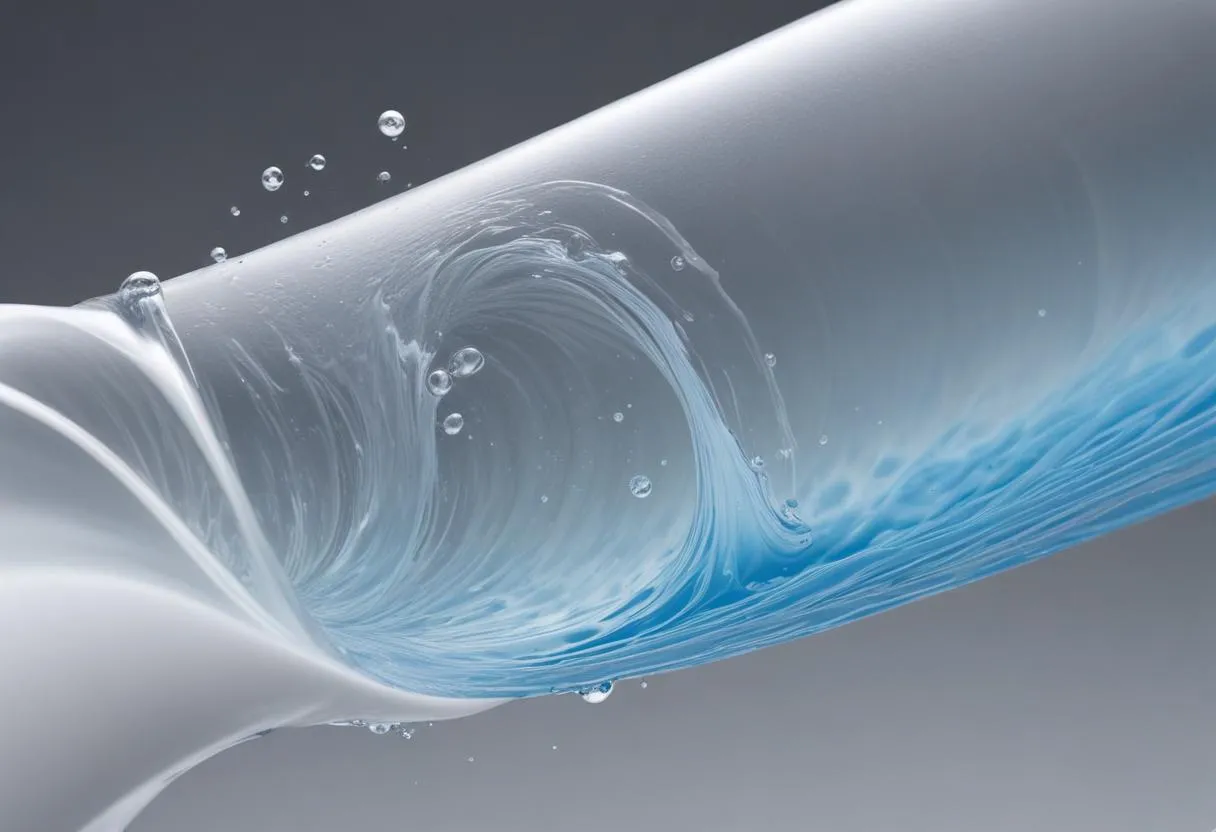 Understanding the types of friction in pump systems is essential for diagnosing issues related to efficiency and designing more effective systems. Friction in pump systems is essentially the resistance encountered by a fluid as it moves through a pipe or conduit. This resistance directly impacts the overall energy efficiency and operational cost of the pump system.
Understanding the types of friction in pump systems is essential for diagnosing issues related to efficiency and designing more effective systems. Friction in pump systems is essentially the resistance encountered by a fluid as it moves through a pipe or conduit. This resistance directly impacts the overall energy efficiency and operational cost of the pump system.
Surface Friction refers to the resistance between the fluid and the inner surfaces of the pipes or ducts through which it flows. The extent of surface friction depends on the material of the pipeline and the roughness of its interior surface. Materials like PVC or copper with smoother surfaces exhibit less friction compared to materials like concrete or galvanized steel.
Fluid Friction, on the other hand, is related to the viscosity of the fluid itself. High-viscosity fluids like oils generate more resistance compared to low-viscosity fluids like water or gasoline. This intrinsic property of the fluid affects how freely it can move through the pipes.
Form Drag occurs due to changes in the geometry of the pipeline system, such as bends, fittings, valves, or any other components that might cause turbulence. Each time the flow direction changes, energy is lost due to form drag.
Technical Specifications for Common Pipe Materials:
| Material | Average Roughness (mm) | Typical Use Cases |
|---|---|---|
| PVC | 0.0015 | Water supply, chemical handling |
| Copper | 0.0015 | Domestic water supply, refrigerant lines |
| Concrete | 0.3 – 3.0 | Large diameter water and sewer pipelines |
| Galvanized Steel | 0.15 | Water distribution, HVAC |
Key Maintenance Areas to Address Friction:
- Regular cleaning of pipes to prevent build-up that increases surface roughness.
- Use of appropriate lubricants for pumps handling high-viscosity fluids.
- Optimization of pipeline route to minimize bends and directional changes.
Incorporating the understanding of these friction types into system design and maintenance practices can substantially improve the longevity and efficiency of a pump system. By selecting appropriate materials and designing layouts that minimize disruptive changes in direction, it is possible to achieve significant reductions in energy consumption and operational costs.
Design strategies for reducing friction
When optimizing a pump system design to reduce friction, several engineering strategies can be applied to achieve smoother fluid flow and enhanced efficiency. Implementing streamlined pipe layouts with fewer bends or directional changes is paramount. This approach minimizes form drag and results in less energy required to maintain flow rates.
To further enhance efficiency, selecting pipe diameters appropriately plays a crucial role in balancing fluid velocity and pressure drop, which directly influence the frictional resistance. Larger pipe diameters reduce the velocity of the fluid, thus decreasing the friction per unit length. However, the increase in diameter should be optimized as overly large pipes could be cost-prohibitive and less efficient in terms of material usage and thermal energy performance.
The inclusion of high-efficiency fittings and valves that offer minimal resistance and are tailored to particular applications also assists in lowering the overall system friction. Using full port ball valves instead of standard gate or butterfly valves, where feasible, can significantly reduce the pressure drops in the system.
- Streamlined pipe layouts to minimize bends.
- Optimal pipe diameter selection for balanced flow.
- High-efficiency valves and fittings with lower friction coefficients.
Another technique involves the selection of internal pipe coatings and treatments that provide a smoother surface to decrease surface friction. Technologies such as epoxy and ceramic coatings have been shown to effectively reduce the roughness of internal pipe surfaces, thereby enhancing flow characteristics.
Moreover, the configuration of the pump and its operational settings must be finely tuned to ensure it operates near its best efficiency point (BEP). Running a pump at its BEP minimizes energy wastage and reduces the wear related to excessive turbulence within the pump itself, both of which are critical in minimizing overall friction losses.
Table of Pipe Coating Options:
| Type of Coating | Reduction in Roughness | Typical Applications |
|---|---|---|
| Epoxy | Up to 60% | Industrial water, waste management |
| Ceramic | Up to 70% | Chemical processing, high-temperature systems |
Effective circulation path design involves not only straighter routes where possible but also the strategic placement of equipment to minimize unnecessary piping. This can involve positioning pumps closer to fluid sources and targeted delivery points to curtail the length of the circuit and, subsequently, the surface friction encountered.
By combining these strategies, system designers can significantly decrease the overall friction factor in pump systems, which leads to a direct improvement in the system’s energy efficiency and operational cost-effectiveness. This integrated approach to design takes both micro and macro aspects of system dynamics into account, ensuring that each part of the system contributes to the desired efficiency gains.
Maintenance practices to minimize losses
 Regular upkeep and targeted maintenance routines are crucial to maintaining optimal function and minimizing friction losses in existing pump systems. Effective maintenance practices not only ensure the longevity of the system but also contribute to consistent energy efficiency and reduced operational costs.
Regular upkeep and targeted maintenance routines are crucial to maintaining optimal function and minimizing friction losses in existing pump systems. Effective maintenance practices not only ensure the longevity of the system but also contribute to consistent energy efficiency and reduced operational costs.
Regular Inspection and Cleaning:
To counteract the effects of surface roughness and obstructions within the pipes, frequent inspections and cleaning are mandatory. Deposits such as scale, rust, and biofilm increase surface roughness and thus enhance frictional resistance. Scheduled chemical or physical cleaning processes help maintain smooth inner surfaces.
Lubrication Management:
The efficiency of mechanical components such as bearings and seals in the pump system is deeply influenced by proper lubrication. Using suitable lubricants can reduce the internal friction of these components, ensuring that they operate smoothly, thereby extending their lifespan and reducing overall energy consumption.
Alignment and Balancing:
Misalignment of the pump shaft and motor and imbalance in the rotating elements can lead to increased mechanical friction and wear. Regular checks and adjustments ensure that components are well-aligned and balanced, minimizing unnecessary mechanical friction and vibration.
Replacement of Worn Out Parts:
Components of the pump system, such as seals, gaskets, bearings, and even pipes, can wear out over time. Replacing these components before they fail helps to maintain the efficiency of the system and prevents increased friction losses due to deteriorated parts.
System Monitoring Tools:
Implementing advanced monitoring tools such as vibration analysis, thermal imaging, and acoustic inspections can help detect areas where friction losses may be increasing unexpectedly. These tools allow for preemptive maintenance interventions, avoiding larger issues and potential breakdowns.
Optimization of System Operation:
Adjusting the operation of pumps to avoid running at full capacity continuously can significantly reduce wear and tear, thus decreasing the friction within the system. Utilizing variable frequency drives (VFDs) to adjust the speed of the pump according to demand can optimize energy use and diminish friction losses.
Table of Recommended Maintenance Intervals:
| Component | Maintenance Interval | Action Required |
|---|---|---|
| Pump Bearings | Every 6 months | Inspect and lubricate |
| Seals and Gaskets | Annually or upon leakage | Replace if necessary |
| Piping System | Bi-annually | Inspect for corrosion and clean |
| Shaft Alignment | Annually | Check alignment and adjust as needed |
Through diligent adherence to these maintenance practices, operators can effectively reduce friction losses within pump systems, thereby achieving a notable improvement in both efficiency and cost-effectiveness. Implementing a comprehensive maintenance strategy based on the system’s specific needs and operational conditions ensures the prolonged health and efficiency of pump systems.